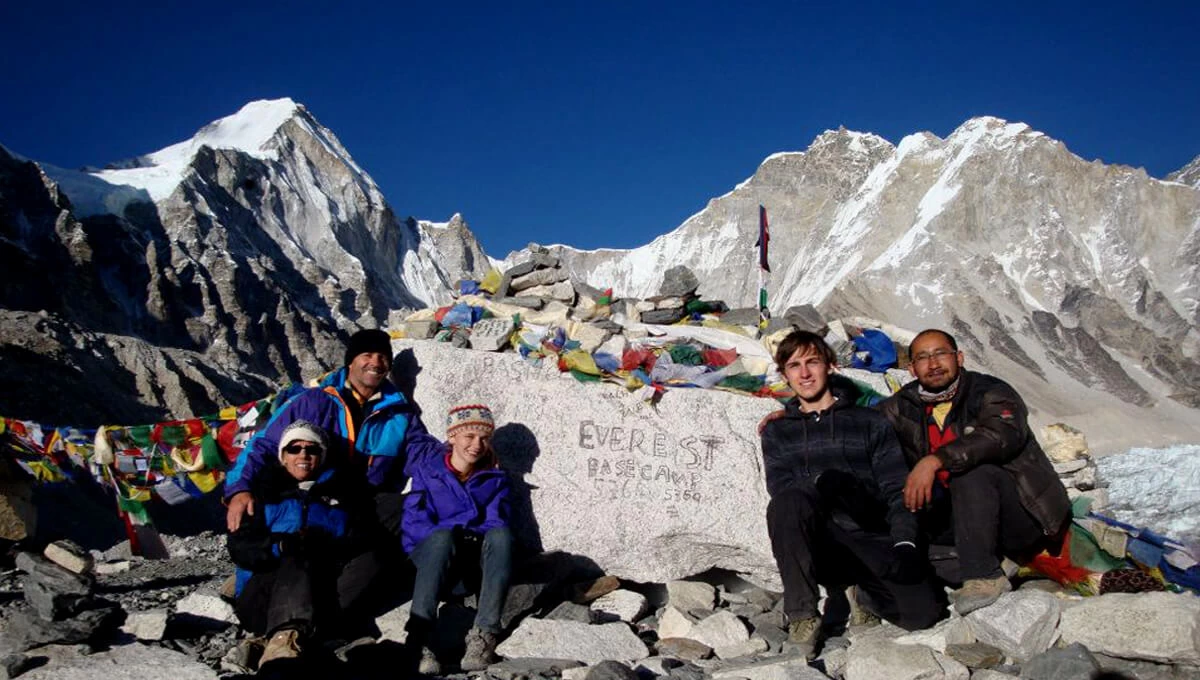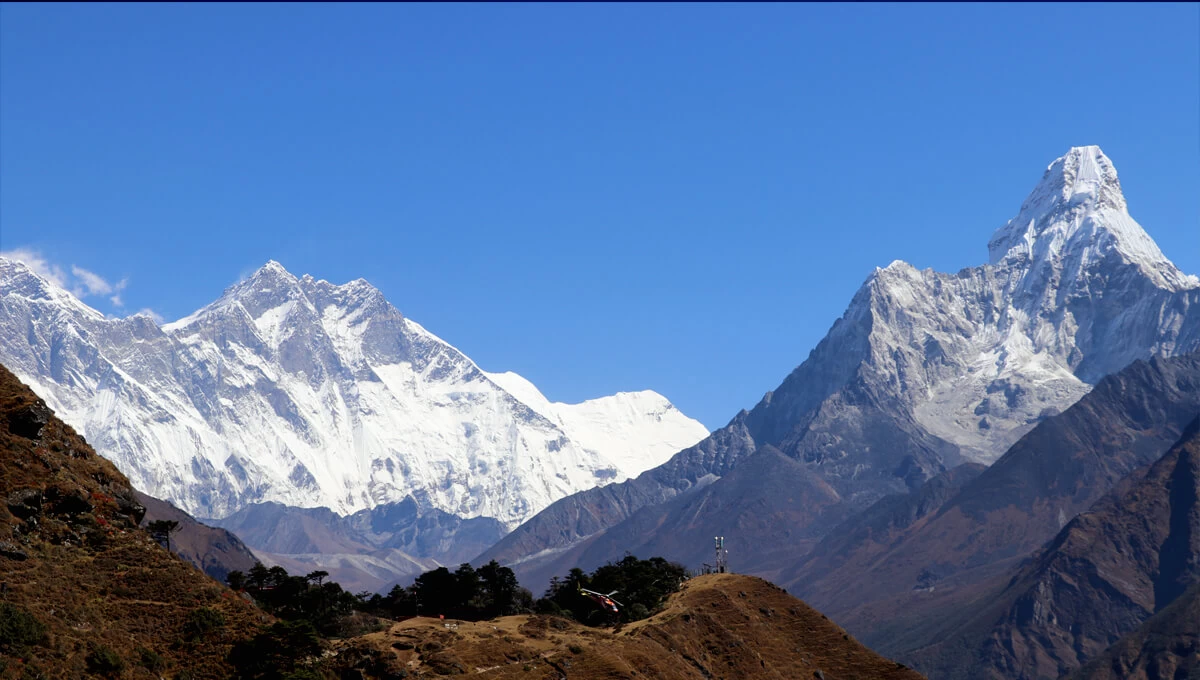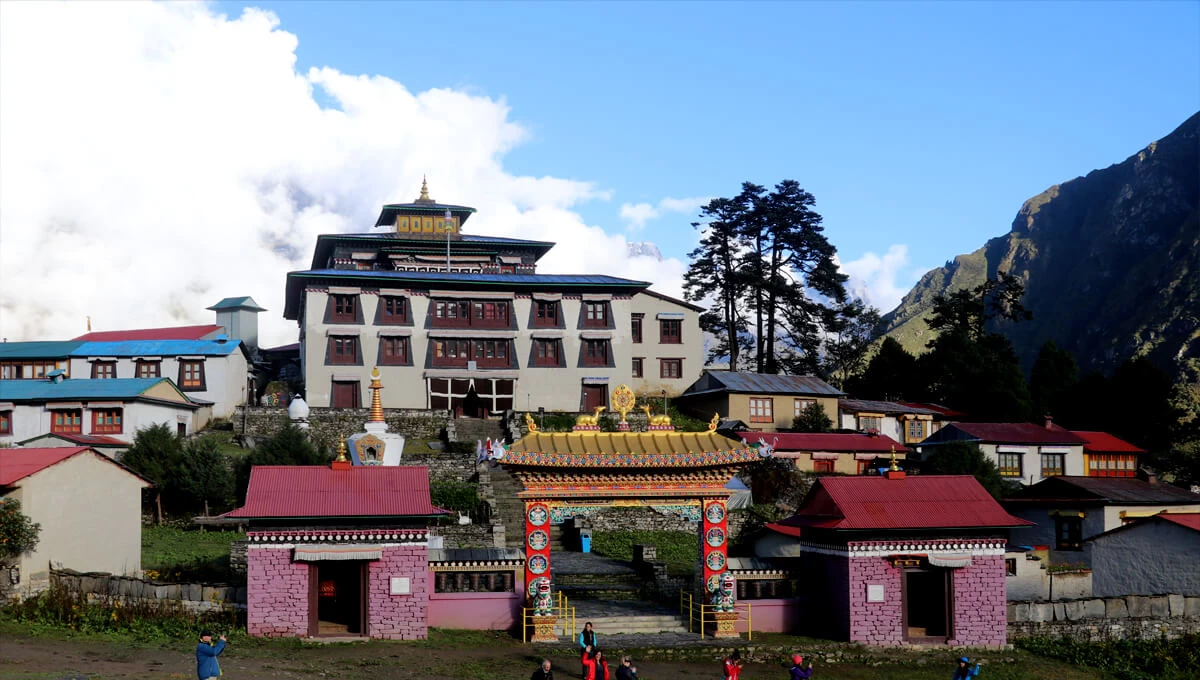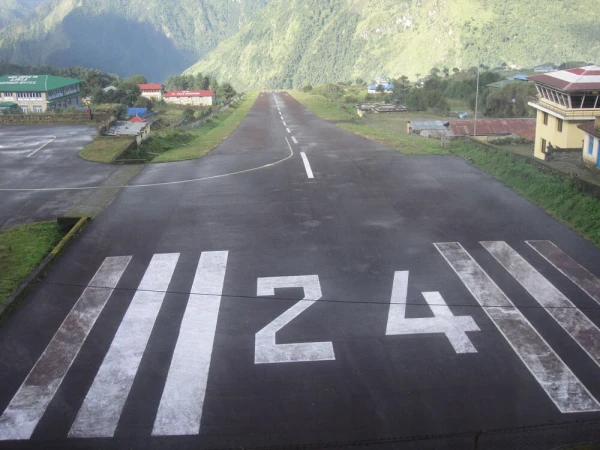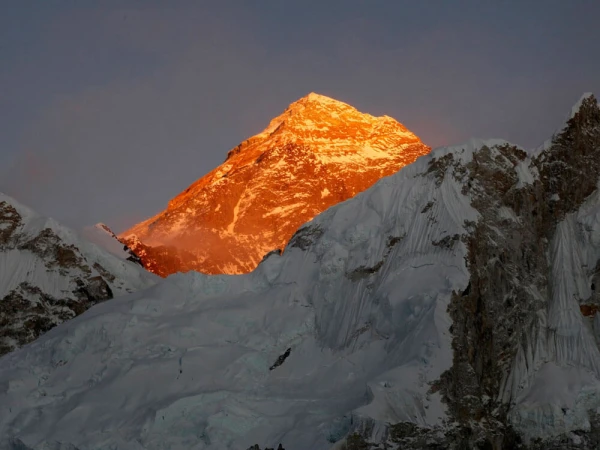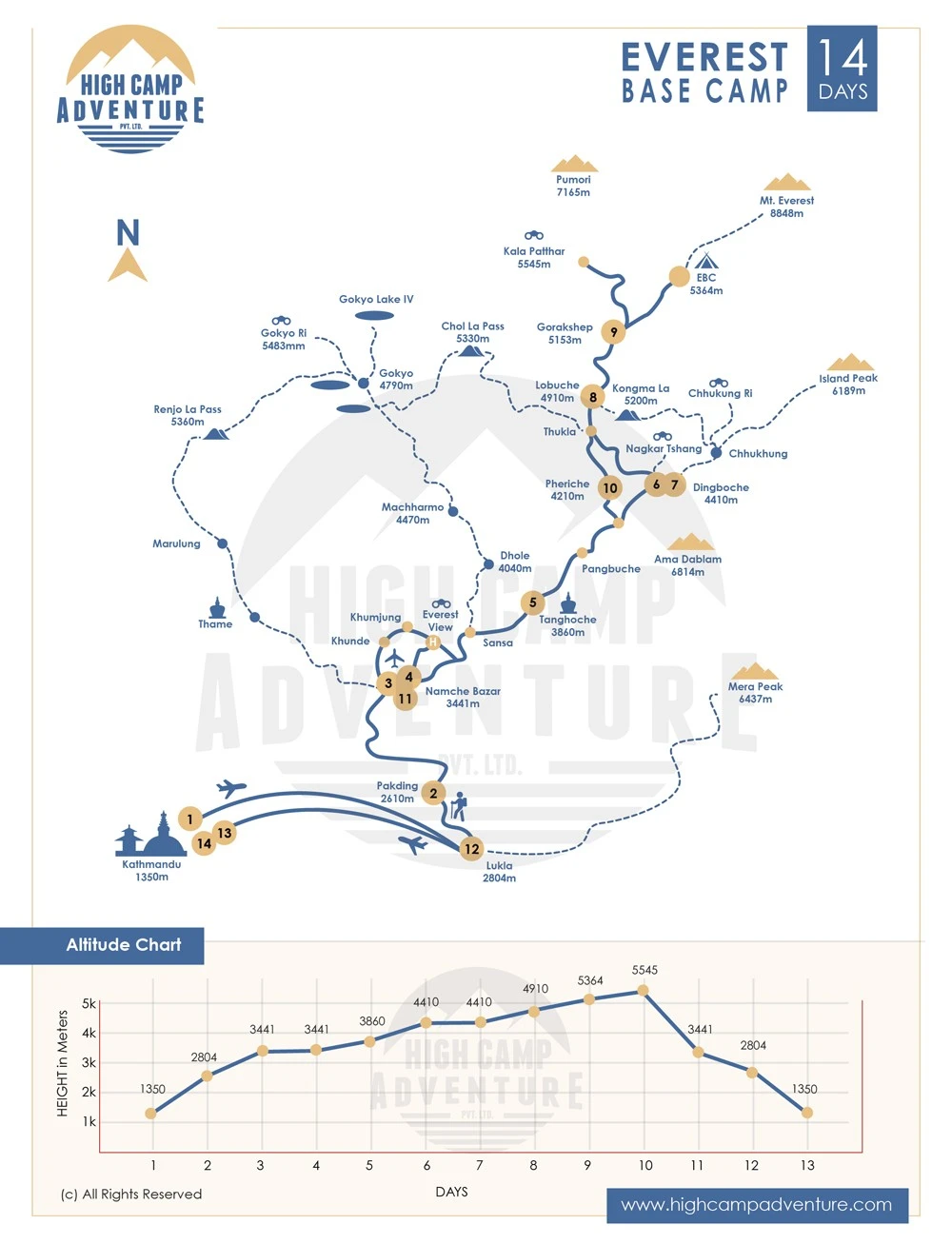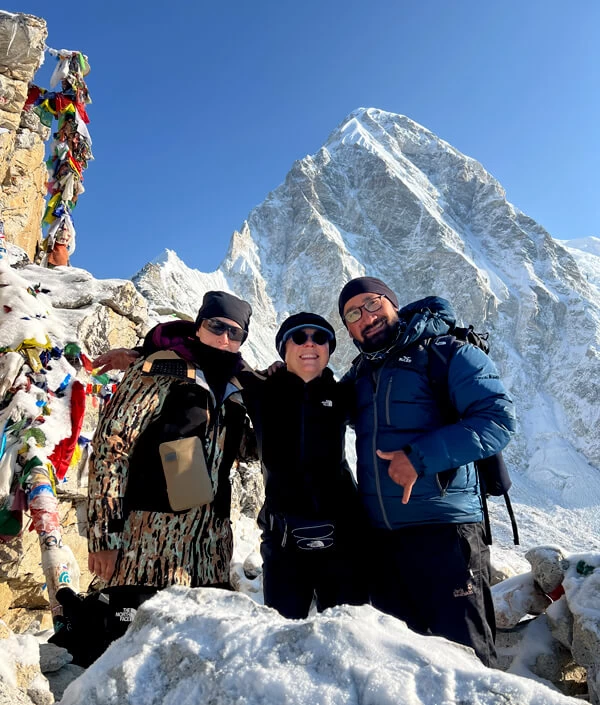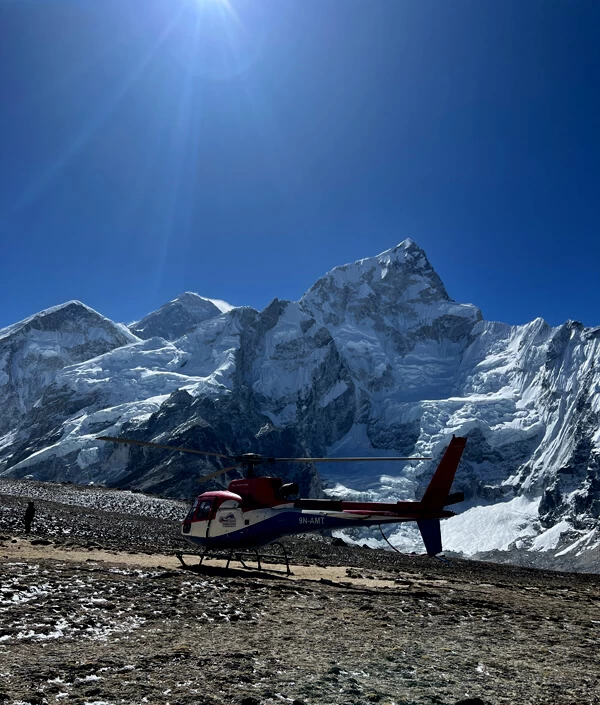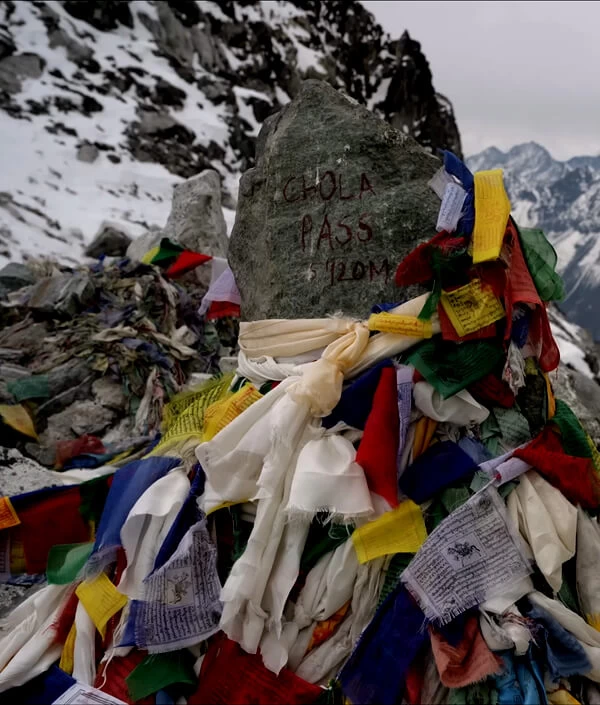Introduction to Everest Base Camp
The Everest Base Camp Trek is one of the most stunning trekking experiences in the world, attracting adventure enthusiasts from across the globe. Located in the Khumbu region of Nepal, this trek offers breathtaking views of the world's highest peak, Mount Everest, along with nearby Himalayan mountains such as Lhotse, Nuptse, and Ama Dablam.
Trekking to Everest Base Camp is among the most unforgettable journeys that combine natural beauty, high-altitude adventure, and rich Sherpa culture. Along the trail, trekkers pass through traditional villages, monasteries, and scenic landscapes, offering you with cultural as well as physical experience.
The trek is suitable for both seasoned and moderately fit beginners, though proper acclimatization and preparation are the major factors to be considered during the Everest Base Camp Trek. One of the major highlights of the EBC Trek is reaching Kala Patthar (5,643 m), an amazing viewpoint to watch the stunning views of Mount Everest, especially during sunrise and sunset.
As the Everest Base Camp Trek is popular, attracting thousands of trekkers every year, the routes are well-established, and proper management of accommodations makes the journey comfortable and safe. This trek is perfect for travellers looking for adventure, photography, and a chance to explore the beauty of the Himalayas.
Overall, the Everest Base Camp Trek is a must-do adventure in Nepal, offering you awe-inspiring scenery, thrilling high-altitude trekking, and memories that last a lifetime.
Important Highlights of the EBC Trek
- Witness the intimidating panoramic views of Nepal’s Great Himalayan Trail on a breathtaking flight from Kathmandu to Lukla.
- Panoramic views of Mount Everest, Lhotse, and other surrounding peaks.
- Trek to Kala Pathar to witness perfect sunrise views
- An immersive experience in a traditional Sherpa village.
- Visit ancient Monasteries such as Tengboche Monastery and many more.
- Opportunities to engage with local Sherpa and experience their culture and tradition.
- Trek through the heart of the UNESCO World Heritage Site, Sagarmatha National Park.
- Trekkers experience countless offbeat peaks, breathtaking views, and a sense of tranquillity at the Base Camp.
What makes the Everest Base Camp Trek the Top Choice for Trekkers?
The Everest Base Camp Trek, located in the Khumbu region of Nepal, is a perfect chance for trekkers to reach the foot of Mount Everest. There are several reasons why the Everest Base Camp has been visited by thousands of trekkers from around the world. Below are some reasons, make the Everest Base Camp Trek the top choice for trekkers.
Breathtaking scenery
Trekkers make their way to Everest Base Camp because of the mesmerizing views seen from the top. The stunning beauty of landscapes and peaceful surroundings make Everest Base Camp worth the visit. You will be making your way through some of the glacial valleys and towering snow-capped peaks with clear skies.
Sherpa Tradition
As you know, the Khumbu region trekking trail passes through the Sherpa community people which provides you with staying and meals. Sherpa is mostly rooted in Buddhism, where you can witness various ancient monasteries. Most of the tea house owners belong to the Sherpa culture.
Wildlife spotting
To reach the Everest Base Camp, you will be navigating your way through the Sagarmatha National Park, which is home to many of the unique Himalayan wildlife. On your way, you can see various Himalayan monal and mammals along with snow leopards.
Panoramic views from Kala Patthar
Kala Patthar offers you a breathtaking 360° panoramic view of the Himalayas and glacier valleys formed by the Khumbu Glacier. Kala Patthar offers you the best and closest views of Mount Everest, Nuptse, Changtse, and Lhotse.
What makes the Everest Base Camp Trek Unique Compared to Other Trekking Destinations?
What really makes the Everest Base Camp Trek unique from other trekking destinations is the perfect blend of natural beauty, cultural encounters, and high-altitude adventure. This well-known journey takes you through the heart of the snow-capped mountains, where you are blessed by the incredible views of Mount Everest, Lhotse, Nuptse, and the iconic Ama Dablam mountain.
As you reach the Sagarmatha National Park, one of the UNESCO World Heritage Sites, you can encounter diverse wildlife, rare alpine vegetation, and picturesque river valleys, adding a great charm to your journey. The overall EBC Trek is not just about the landscapes, but a chance for cultural immersion, making this location different from other spots. Along the way, you pass through traditional Sherpa villages, where you can witness the warm hospitality and daily living of the local Sherpas.
Getting a chance to visit ancient monasteries, colourful prayer flags, and beautiful spinning wheels offers a spiritual ambience that makes the journey memorable. The Everest Base Camp Trek is not just about physical challenge, but a chance to dive into the local traditions, history, and experience the local Himalayan lifestyle, making it a journey that no other spot offers.
Features Provided by High Camp Adventure for the Everest Base Camp
The Everest Base Camp Trek with the team of High Camp Adventure offers you the best services, providing you with an experienced Licensed Guide and Porter who helps you navigate through different challenging trail conditions and focuses on safe and memorable trekking experiences.
Professional Guide and Team Crew
Everest Base Camp Trek is one of the most favoured trekking destinations in Nepal, known for its mesmerising views and stunning landscapes. As a trekking agency, High Camp Adventure provides trekkers with expert guides and supporting staff members who are experienced and knowledgeable about the region. They help you ensure your safety, navigate through challenging terrains, and provide you with a perfect spot for acclimatization.
Porter Services
High Camp Adventure during the Everest Base Camp Trek provides you with a porter who will be carrying all your luggage, allowing you to mainly focus on the journey with a lot of experiences while enjoying the remarkable views of the Himalayas.
Transportation Services
For the Everest Base Camp Journney, High Camp Adventure arranges the itinerary as per the needs and safety of the trekkers. Transportation for the Base Camp includes a morning flight from Kathmandu, and your trek begins from Lukla.
Customizable Itineraries
High Camp Adventure Customizable trekking packages make it possible for trekkers to wish to follow a longer or shorter route to navigate through lesser-known villages and trail routes. They can reach Kala Patthar to get a much better view of Mount Everest. Therefore, our team provides you with customizable facilities for the trekkers.
Group or Solo Trekking
High Camp Adventure allows trekkers to trek in a group or independently. However, trekking in a group can encourage you with proper interactions, providing an opportunity for trekkers to meet other hikers with similar interests and passions, while solo treks are more focused on planned itineraries and dedicated support.
Is the trek to Everest Base Camp deserving of all the effort?
The Everest Base Camp Trek is one of the most life-changing adventures that stays with you forever. From taking the thrilling flight from Kathmandu - Lukla, where you are treated to the first glimpse of Everest and other Himalayan giants behind. The trek takes you through traditional Sherpa villages, ancient monasteries, and blooming rhododendron forests, rewarding you with the impressive vistas of the Himalayas. Getting a chance to stand at the foot of Mount Everest, where many climbers begin their summit push, offers you some of the breathtaking views of towering peaks all around you.
This EBC Trek is considered one of the high-altitude treks, offering a great connection to the warm-hearted Sherpa culture, where you can experience the lifestyle of the locals. Whether you are someone who wants a perfect adventurous journey or a nature enthusiast, the trail to the base camp offers an unforgettable experience that stays with you forever, making the effort worth it.
Everest Base Camp Trek Cost Details
The Everest Base Camp Trek offers flexible pricing based on group size, making it accessible for solo travellers, couples, and larger groups. The standard price starts from US$1499 - US$1599, with a saving of US$150. The cost includes essential trekking services such as accommodations in teahouses, meals, permits, and a professional guide, ensuring a safe and enjoyable high-altitude adventure.
For individual travellers, the trek costsUS$1499, perfect for solo adventurers seeking a personalised experience. Small groups of 2 - 4 pax benefit from a reduced rate of US$1449, making it perfect for couples or friends travelling together. Medium-sized groups of 5 - 10 pax pay US$1399, while larger groups of 11 - 15 pax can enjoy at US$1349 per person.
The best value is offered to groups of 16 - 20 pax, with the cost dropping to UD$1299 per person. This makes the Everest Base Camp Trek not only an unforgettable Himalayan adventure but also a cost-effective choice for group travellers.
How is Everest Base Camp an exceptional experience for trekkers?
The Everest Base Camp Trek is more than a hike in the Himalayas, but an unforgettable journey for adventure seekers and nature lovers. Situated in the Khumbu Region of Nepal, the base camp is one of the iconic spots, serving as the main point where climbers make their summit attempt to Mount Everest.
There are two main base camps: South Base Camp in Nepal and North Base Camp in Tibet. However, among the two, the most popular is the South Camp in Nepal, attracting thousands of trekkers every year due to its breathtaking views, vibrant culture, and well-marked trails.
The trek to Everest Base Camp takes you through the Sagarmatha National Park, a UNESCO World Heritage Site, especially known for its alpine forests, rare wildlife, and incredible Himalayan landscapes. Along the way, trekkers can encounter some of the jaw-dropping views of the Khumbu Icefall, glacial rivers, and breathtaking panoramic views of peaks like Lhotse, Nuptse, and Ama Dablam.
The high altitude trekking offers you a cultural immersion, as you get to pass through Sherpa villages, visit ancient monasteries, and engage with the local traditions of the Sherpa. This is why the Everest trekking itinerary is considered one of the best trekking routes in Nepal.
Flight from Kathmandu to Lukla during the high season
Nepal Aviation Authority reroutes the flight from Kathmandu to Lukla during busy seasons due to intense air traffic. Since 2019, the Nepal Aviation Authority has altered the route, causing the majority of flights to Lukla to depart from Ramechhap. At peak times, the Tribhuvan International Airport gets congested with flights from both domestic and international destinations. Thus, to ensure convenient and secure travel, flights to Lukla primarily depart from Ramechhap. You will travel from Kathmandu to Ramechhap, a journey that typically takes about 5 hours to complete, depending on the state of the road. The return trip is similar, as you will fly from Lukla to Ramechhap and then drive to Kathmandu, offering breathtaking views of the hills and nearby scenery.
